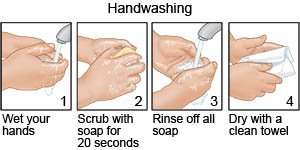Cephalohematoma
Medically reviewed by Drugs.com. Last updated on Sep 23, 2025.
A cephalohematoma (CH) is a collection of blood under your baby's scalp. This condition usually happens when blood vessels rupture (burst) during vaginal birth. Blood leaks out of the blood vessels and pools in an area. A CH usually forms on 1 side of the head. Rarely, it may form on both sides.
DISCHARGE INSTRUCTIONS:
Seek care immediately if:
- The skin over the CH is red, swollen, warm, or draining fluid.
- The CH is getting bigger instead of smaller.
Related medications
Call your baby's doctor if:
- Your baby is fussier than usual or cries and cannot be soothed.
- You have questions or concerns about your baby's condition or care.
Manage your baby's CH:
A CH often goes away on its own within 1 month. You may need to do the following until the CH is gone:
- Prevent an infection. Wash your hands before you care for your baby's CH. Use soap and running water. Dry your hands with a clean towel. Keep the CH area clean and dry. Signs of infection include red, swollen, or warm skin, or discharge (fluid) draining from the area.

- Check the CH for any changes. Examples include an increase in the size or change in the shape or color. The CH should get smaller over a few days or weeks. The center may go away before the edges do. This causes the CH to look like a crater. This is expected.
- Tell your baby's provider about any behavior changes in your baby. Tell the provider if your baby starts to cry more, or crying sounds different than before. Changes in your baby's feeding or sleeping routines should also be reported. Check for jaundice or signs of anemia.
Follow up with your baby's doctor as directed:
Write down your questions so you remember to ask them during your visits.
© Copyright Merative 2025 Information is for End User's use only and may not be sold, redistributed or otherwise used for commercial purposes.
The above information is an educational aid only. It is not intended as medical advice for individual conditions or treatments. Talk to your doctor, nurse or pharmacist before following any medical regimen to see if it is safe and effective for you.
Further information
Always consult your healthcare provider to ensure the information displayed on this page applies to your personal circumstances.
